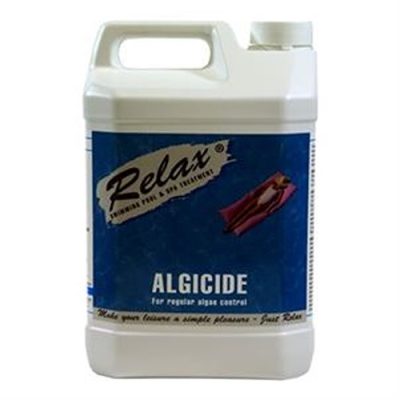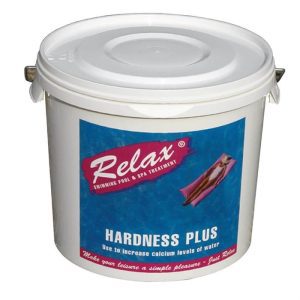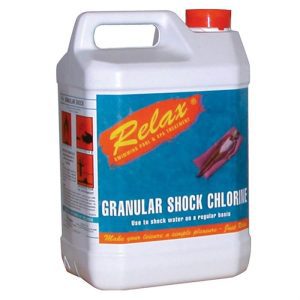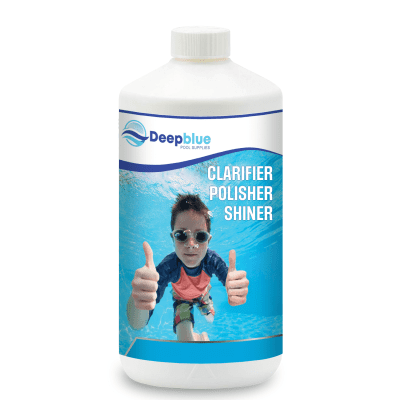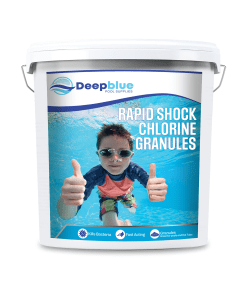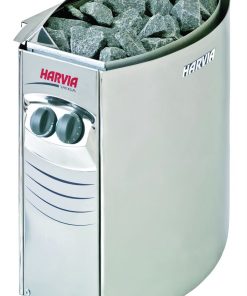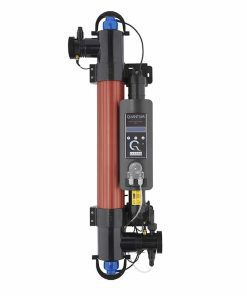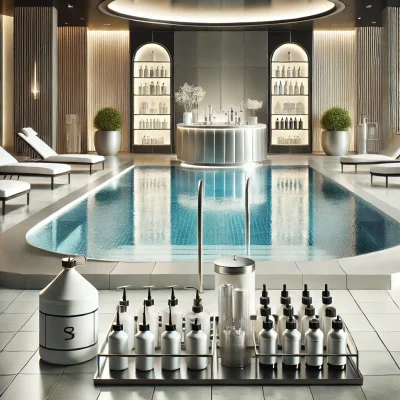Blogpool, Chemicals, Hottub, Maintenance, Water Testing
Hot Tub Maintenance: A Beginner’s Guide to Crystal Clear Water
The ownership of hot tubs provides an excellent opportunity for relaxation and relaxation but requires regular maintenance to achieve safe and clean water conditions. This guide provides essential information to maintain your hot tub properly and achieve crystal-clear water throughout the entire year whether you are a beginner or an experienced owner.
Hot Tub Maintenance Plays a Vital Role for Several Reasons
The proper upkeep of a hot tub results in better visual appearance alongside improved user safety. Unclean hot tubs function as bacterial breeding sites that result in skin irritations and rashes together with various health problems. The proper maintenance of water chemistry protects both your equipment and extends the lifetime of your hot tub.
Daily Hot Tub Maintenance
To maintain optimal hot tub condition follow these basic daily maintenance steps:
Examine the water level to maintain adequate coverage of jets while preventing excessive overflow. Fill the hot tub with new water when the water level reaches a point that makes the jets uncovered.
Turn on the jets for 10-15 minutes every day. The water circulation and chemical distribution remain consistent across the entire tub through this process.
Check the hot tub water chemistry by using a water test strip to determine pH levels and alkalinity and sanitizer concentration. Daily water chemistry tests help create a protected and well-balanced hot tub environment.
Weekly Hot Tub Maintenance
The weekly maintenance tasks will help you maintain your hot tub in its best condition.
The hot tub water requires shocking by using a large sanitizer addition to remove all organic substances and oils and bacteria which develop throughout time. Choose between chlorine shock and non-chlorine shock according to your sanitizer system requirements for your tub.
Shock dosage: Shock requires 50g of solution per 1,000 liters of water.
Hot tub filters absorb dirt and oils and various types of debris that cause them to become clogged. The filter needs rinsing under running water to remove all debris from its surface. A solution containing water and filter cleaner should be used to soak the filter for multiple hours before a complete rinse before filter reinstallation.
Use a soft cloth along with non-abrasive cleaner to clean the interior hot tub surfaces. Biofilm formation will be stopped while the shell surface will maintain its clean and shiny appearance.
Hot Tub Chemical Balancing
Hot tub maintenance depends heavily on achieving suitable water chemistry conditions. The following steps will help you maintain appropriate chemical concentrations in your hot tub system:
pH Levels should be set between 7.2 and 7.8. The water becomes acidic when pH levels drop too low because it causes hot tub components to corrode. High pH levels result in water clouding while also reducing sanitizer effectiveness. The pH levels need adjustment using pH increaser or pH decreaser products.
The recommended dosage for increasing pH with pH increaser is 10g per 1,000 liters of water.
Using 20g per 1,000 liters of water with pH decreaser will lower the pH levels.
Total alkalinity should remain between 80-120 ppm. The water chemistry remains stable because of this measure. Use alkalinity increaser or baking soda to increase the levels when necessary.
The recommended alkalinity increaser dosage for increasing 10 ppm alkalinity is 25g per 1,000 liters of solution.
The sanitizer levels need to be maintained either with chlorine or bromine according to your system requirements. The recommended chlorine concentration ranges between 1-3 ppm but bromine levels should be maintained at 3-5 ppm.
Hot Tub Maintenance During Month
A complete hot tub cleaning must occur every month to maintain optimal hot tub conditions. Regular water maintenance alongside equipment checks will guarantee both fresh water and effective operation.
Your hot tub water requires regular drainage and fresh refill every 4 to 6 weeks because chemical buildup and contaminants make water chemistry maintenance difficult.Tip: Prior to draining the water you should incorporate a pipe cleaner or line flush product to remove any debris from the plumbing lines.
Deep Clean the Shell and Cover: An empty tub presents an opportunity to deep clean every component using a non-abrasive cleaner and a soft cloth. Make sure to wipe down the cover as well, as it can accumulate dust, dirt, and mildew.
Inspect and Replace Filters: Check your filters for any signs of wear or damage. The life expectancy of filters is around one year yet you need to replace them earlier if they become too damaged or clogged for cleaning.
Balancing Chemicals After Refilling
Rebalancing your hot tub chemicals becomes essential after refilling with fresh water.
Test the Water: Use a test strip to check the pH, alkalinity, and sanitizer levels.
Add Sanitizer: The water requires the appropriate amount of chlorine or bromine depending on your system’s specifications.
Adjust pH and Alkalinity: The solution requires adding specific chemicals to reach the proper pH and alkalinity ranges.
Preventing Biofilm and Scale Build-Up
Your hot tub will naturally develop biofilm and scale deposits whenever water chemistry remains unregulated. The following steps will help you stop these issues from occurring.
Use a Scale Inhibitor: Hard water owners must consider adding scale inhibitors to their hot tub water because scale deposits will form on the surface and in plumbing lines. Add 50ml per 1,000 liters of water to implement the scale inhibitor once per month.
Dosage: Add 50ml per 1,000 liters of water.
Clean the Plumbing Lines: You should use pipe cleaners along with line flushes each time you drain your hot tub. Biofilm in the plumbing needs removal because it acts as a bacterial habitat that causes pipe blockages.
Energy-Efficient Hot Tub Tips
Hot tub efficiency maintenance allows you to lower your energy expenses while extending the equipment lifespan. Here are a few energy-saving tips:
Use a Thermal Cover: A well-insulated cover helps retain heat and prevents water evaporation. The cover needs to fit snugly over the tub to keep the heat inside.
Lower the Temperature When Not in Use: You should decrease your hot tub temperature by a few degrees whenever you plan to leave the hot tub unused for several days.
Use a Timed Circulation Pump: Hot tubs with built-in timers let you set the duration of pump operation during each day. Running the pump for 4-6 hours daily is usually sufficient to keep the water clean while reducing energy consumption.
When to Call a Professional
The homeowner can complete most hot tub maintenance responsibilities yet professional assistance is required for certain situations.
Cloudy Water That Refuses to Clear Up: The hot tub’s plumbing or filtration system shows indications of malfunction when water remains hazy after adjusting chemical levels and replacing filters.
Equipment Malfunction: Hot tub heaters and pumps along with jets require professional attention when they stop operating or produce strange noises because more damage could result otherwise.
Leaks: Water level drops quickly when you have a leak within the plumbing lines or hot tub shell. The expert will detect where the leak exists to perform the necessary repairs.
Hot Tub Safety Tips
Hot tub cleanliness serves dual functions because it provides both comfort and safety to users. The following safety guidelines will help you maintain your hot tub as a secure area for relaxation with your family:
Monitor Water Temperature: The water temperature needs to remain at or below 40°C (104°F) to prevent excessive heat. Exposure to high temperatures for long periods creates dizziness alongside dehydration and potentially dangerous health problems.
Limit Soak Time: Soak for 15-20 minutes at a time to prevent overheating or dehydration.
Keep the Hot Tub Covered: When the hot tub is not in use, always keep it covered. This prevents children or pets from accidentally falling in and helps maintain water cleanliness.
Conclusion
By performing regular maintenance and chemical balancing tasks your hot tub will be available for year-round use as a relaxing safe space. Regular implementation of these daily, weekly, and monthly maintenance tasks will keep your hot tub clean and comfortable for immediate use. To purchase any mentioned products or chemicals please visit our website or reach out to our customer support for guidance. Regular checks of water chemistry combined with prompt attention to equipment problems will help maintain proper operation of your system.
Some products you might be interested in:
Algicides Clarifiers and Cleaners
Best Online Sellers
Algicides Clarifiers and Cleaners


